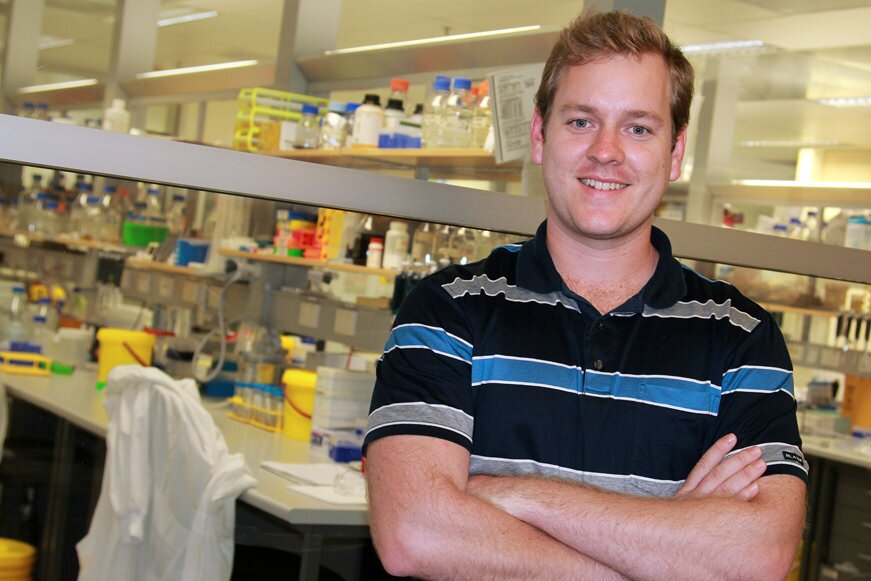Last updated June 28, 2017 at 11:20 am
We asked a bunch of young scientists who received the Lindau Nobel Laureate Fellowship to be our field reporters at the annual Science at the Shine Dome conference. In this report, Andrew, a chemist from Brisbane, writes about day one at the conference.
My day as a postgraduate student typically involves fumbling around the lab setting up experiments, interpreting results or rather trying to figure out why my experiment has failed the day before. But today was one of the rarer days in which I stepped away from the lab bench to participate in a very exciting scientific conference.
I was excited to be given the opportunity to attend the annual Science at the Shine Dome conference held at the Australian Academy of Science in Canberra. This conference celebrates the achievements of some of the most highly esteemed researchers from across Australia. At this event new fellows are inducted into the Australian Academy of Science, followed by a day of celebration of various honorific awards for early- and mid-career researchers, and concludes with a symposium on the final day which this year is on the topic of invasive species.
After the welcome address by the the Academy’s president Prof Andrew Holmes, the first day of events kicked off with the presentation of the Matthew Flinders Medal and Lecture by Prof. Barry Ninham. This proved to be a very thought stimulating talk that highlighted the importance of uniting both the biological and physical sciences.
The rest of the day was followed by seminars from all of the newly elected academy of science fellows, who each gave a short 12 min summary of their research highlights over the past 20 or so years of research.
There were presentations from an array of scientific disciplines including astrophysics, biochemistry, agricultural science, developmental biology, immunology, mathematics as well as others. Despite many of these topics being very foreign to my field of expertise, the talks were surprisingly easy to follow due to the simplistic nature in which they were presented, making them very enjoyable to listen to.
The conclusion of the seminars at the end of the day was immediately followed by a briefing for early career researcher delegates who have been selected to attend the 67th Lindau Nobel Laureate Meeting. The Lindau Nobel Laureate Meeting, which is dedicated to chemistry this year, is a chance for highly talented young chemists from around the world to take part in a six-day program of lectures, workshops and panel discussions with Nobel Laureates. I was fortunate enough to be selected to be part of the Australian delegation to attend the Lindau Nobel Laureate meeting, and the briefing at the Australian Academy of Science was the first chance to formally meet the other delegates and our delegate leader. At this briefing there was some excellent advice passed onto us from some of the past delegation leaders who gave us some insights and tactics as to how to make the most of the experience, and further fueled the excitement and anticipation of the delegation to attend this once in a life time opportunity.
To finish off the first day of events was a networking dinner for all early career researchers and academy of science fellows which was a great chance to get to meet all the diverse people attending the event. I was fortunate enough to meet with many highly acclaimed scientists which stimulated some very insightful conversations and it was particularly inspiring to see the of passion for science that everyone in the room shared. This is no doubt the best scientific conference that I have so far had the chance to attend and I thoroughly look forward the next two days of events.
Photo of myself with Prof. Jennifer Graves at the early career research networking dinner.
Did you like this blog? Follow us on Facebook, Twitter and Instagram to get all the latest science.































































































































































































































































